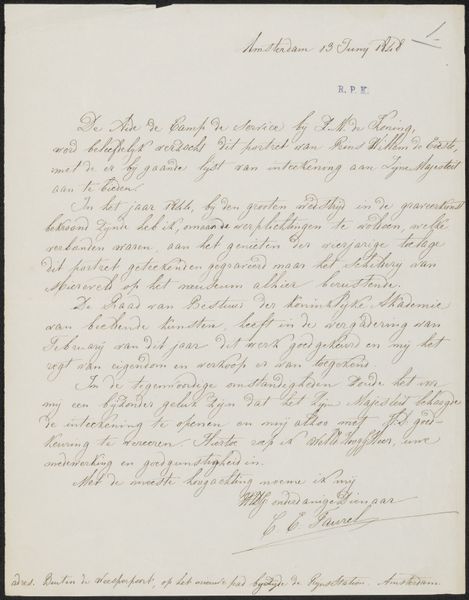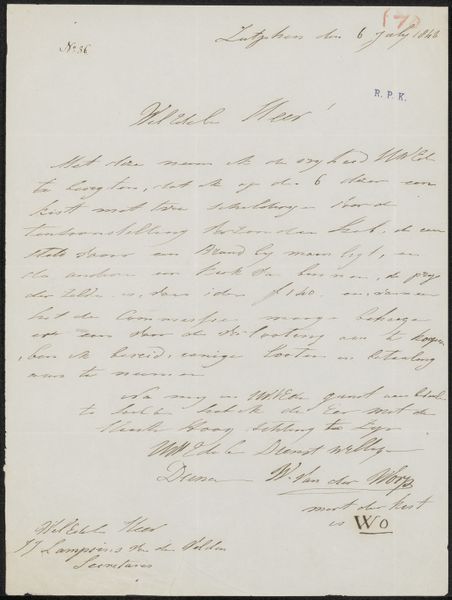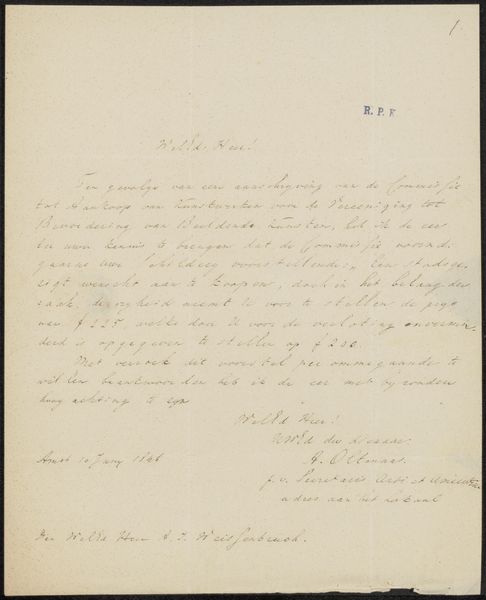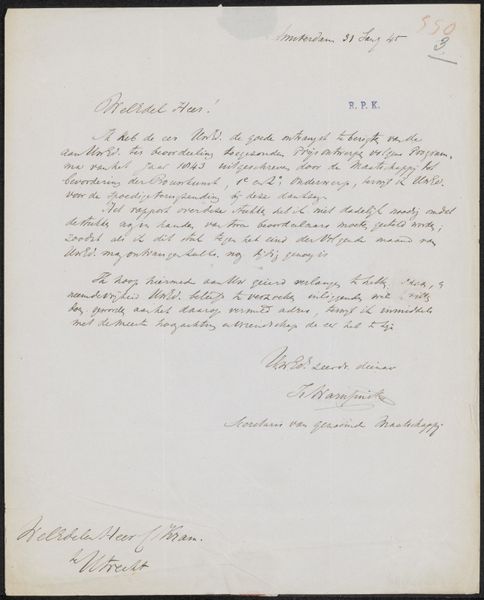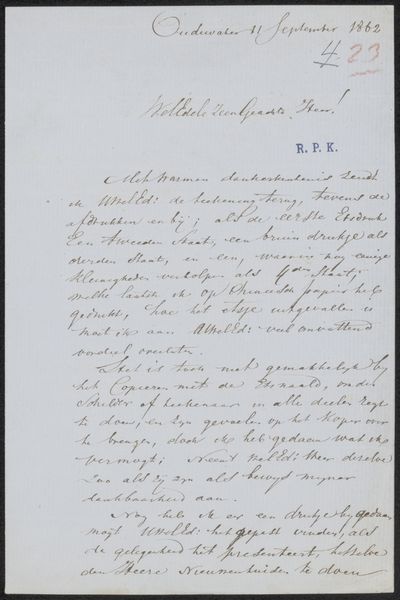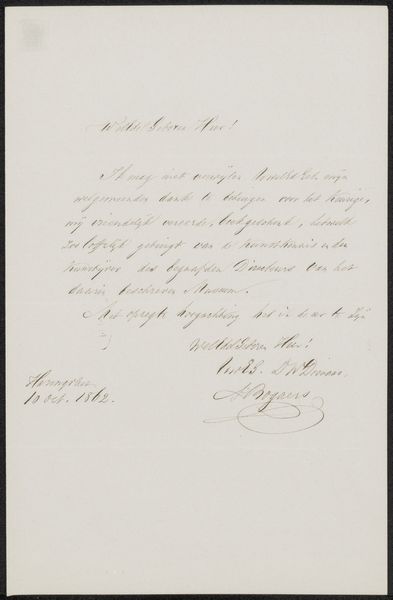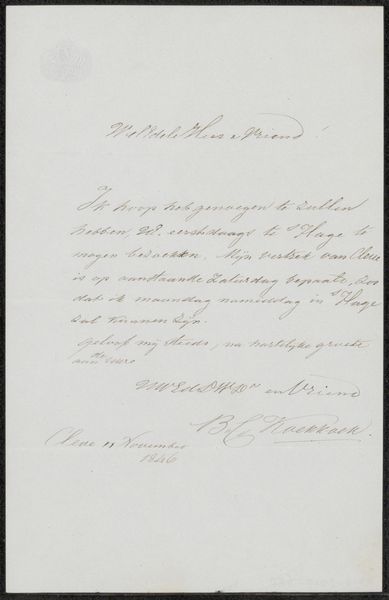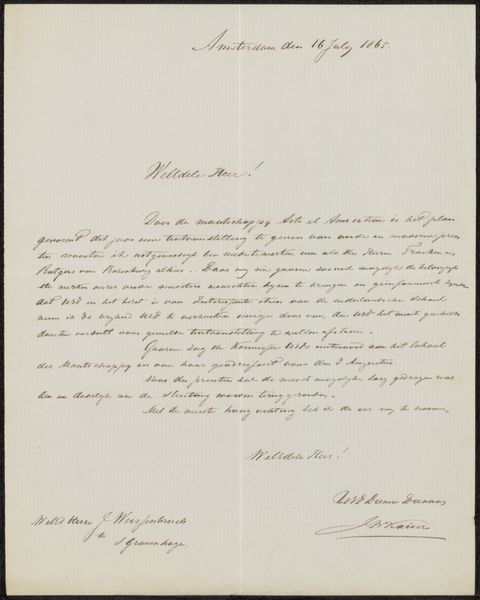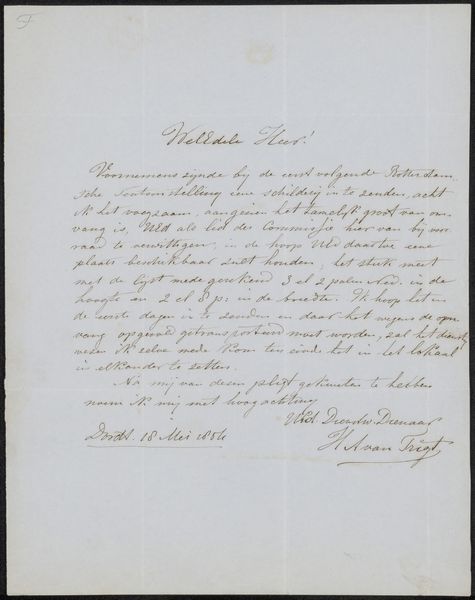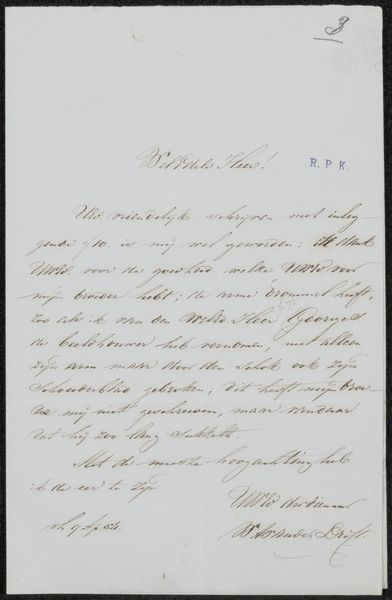
drawing, paper, ink, pen
#
drawing
#
paper
#
ink
#
pen-ink sketch
#
pen
#
genre-painting
Copyright: Rijks Museum: Open Domain
Curator: Welcome. Today we will be looking at "Brief aan Lambertus Hardenberg," which translates to "Letter to Lambertus Hardenberg," a work possibly created around 1854 by W.A. van der Drift. It's a genre painting executed in ink on paper. What are your first thoughts? Editor: It's a document! There is an inherent solemnity. I wonder about the urgency and the conditions in which this letter was composed. Curator: Look closely at the writing itself, its flow and rhythm, its variation in pressure. The materiality is compelling. The ink sits boldly, giving weight to what is shared in language. Editor: Indeed. And understanding that the written word here seeks to bridge a human gap, makes me wonder who Lambertus Hardenberg was to van der Drift, and how this letter was intended to land for the recipient. Were there other power dynamics at play, beyond social formalities and courtesies? Curator: Certainly the act of corresponding had social dimensions, but I'm interested in the way van der Drift articulates space on the page. Notice how the script curves and straightens in places. He seems to modulate his expressive markings deliberately. Editor: And the texture, though on a smaller scale, recalls those nineteenth-century currents and networks of intellectuals, who wrote each other long philosophical letters or, like today, circulated revolutionary pamphlets among each other. Curator: These forms of communications also dictated social and creative possibilities and structures, offering insights on social status, gender and political alignment. Editor: Thank you for providing this focus. By examining its style and textual composition, and thinking of the political landscape that might have brought van der Drift and Lambertus Hardenberg into conversation, we create opportunities for discourse about historical figures and important dialogues in time. Curator: Indeed. What seems like an act of personal correspondence opens into multiple spaces of discussion on how artists sought connection, using both aesthetic intention and specific context.
Comments
No comments
Be the first to comment and join the conversation on the ultimate creative platform.

